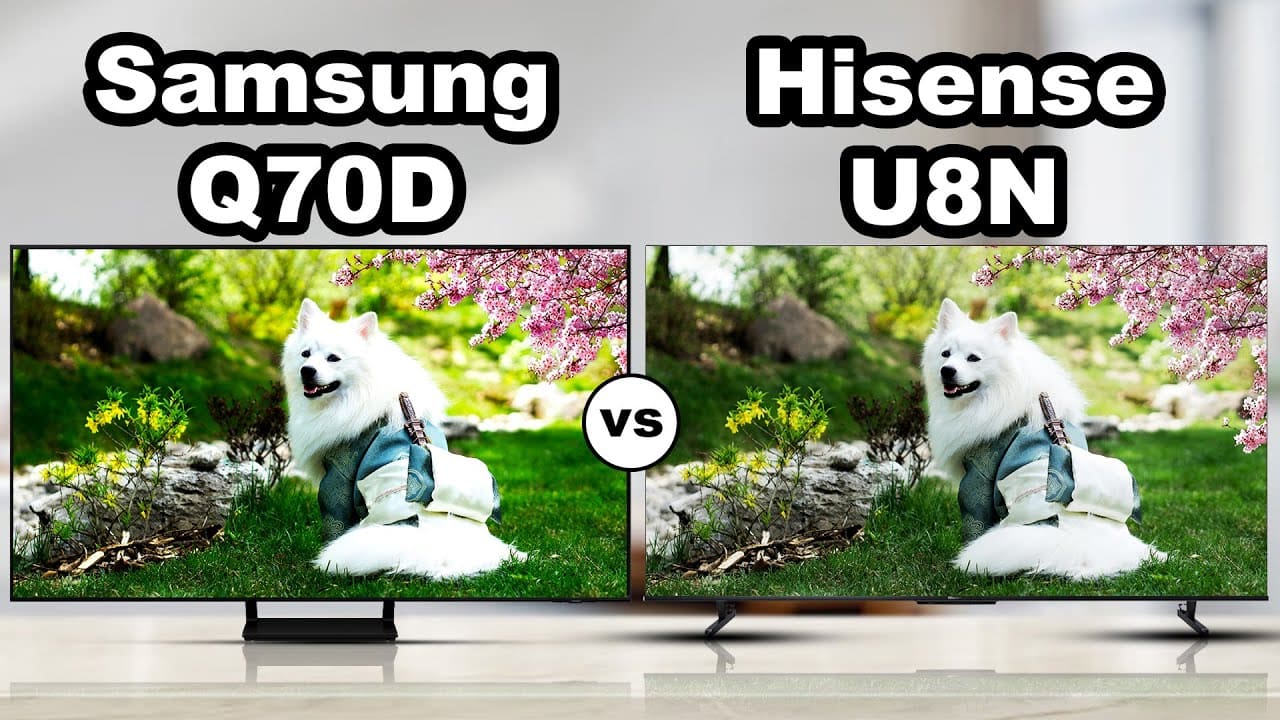Introduction
In the ever-evolving world of home entertainment, selecting the right television can be daunting. Two of the leading contenders in the market are Hisense and Samsung, each offering a range of models that cater to various preferences and budgets. This article aims to provide a comprehensive guide for consumers in the USA to make an informed decision between Hisense vs. Samsung TVs. We will explore key features, compare pricing, and provide insights into the strengths and weaknesses of each brand. Additionally, we will include a Q&A section to address common questions that may arise during the decision-making process.
Overview of Hisense and Samsung
Hisense: Affordable Innovation
Founded in 1969, Hisense has rapidly grown to become one of the world’s leading manufacturers of televisions. Known for its budget-friendly options, Hisense offers a wide variety of models, including 4K and 8K TVs, that often include advanced features at competitive prices. Their commitment to innovation has resulted in technologies like ULED, which enhances color, brightness, and contrast.
Samsung: Premium Quality and Cutting-Edge Technology
Samsung, established in 1938, is a global leader in electronics and has been at the forefront of television technology for decades. Renowned for its high-quality displays and innovative features, Samsung TVs often come equipped with QLED technology, which delivers stunning visuals and superior color accuracy. Although typically more expensive than Hisense, Samsung TVs are seen as a worthwhile investment for those seeking premium performance and longevity.
Feature Comparison
| Feature | Hisense | Samsung |
|---|---|---|
| Display Technology | ULED, LED | QLED, OLED, LED |
| Resolution | 4K, 8K | 4K, 8K, 4K Ultra HD |
| Smart TV Platform | Android TV, VIDAA | Tizen |
| HDR Support | HDR10, Dolby Vision | HDR10+, HDR10, Dolby Vision |
| Audio Technology | DTS Virtual | Dolby Atmos |
| Gaming Features | Game Mode, Variable Refresh Rate | Game Mode, FreeSync |
| Price Range | $300 – $1,500 | $500 – $3,000 |
Display Technology
Hisense primarily utilizes ULED technology, enhancing brightness and color depth. Samsung, however, is well-known for its QLED and OLED offerings, providing unparalleled color vibrancy and contrast. For consumers prioritizing picture quality, Samsung may hold an edge.
Resolution and HDR Support
Both brands offer 4K and 8K resolution options, catering to consumers looking for sharp, high-definition visuals. Samsung’s HDR10+ technology, combined with its QLED panels, often results in superior HDR performance compared to Hisense’s HDR10 and Dolby Vision support.
Smart TV Platforms
Hisense TVs run on either Android TV or the VIDAA platform, offering a variety of streaming options. Samsung’s Tizen platform is user-friendly, providing easy access to popular apps and services. Samsung also includes a universal guide that simplifies content discovery.
Audio Technology
While Hisense employs DTS Virtual
for enhanced sound, Samsung’s integration of Dolby Atmos provides an immersive audio experience, making it a better choice for audiophiles and home theater enthusiasts.
Gaming Features
Both brands cater to gamers with specific features. Hisense offers a Game Mode and Variable Refresh Rate, while Samsung includes FreeSync technology for smoother gaming experiences. Depending on the gaming needs, both brands are competitive in this regard.
Pricing and Value
Hisense TVs typically provide excellent value for budget-conscious consumers. With prices ranging from $300 to $1,500, Hisense models often include features that rival more expensive options. Conversely, Samsung TVs, with a price range of $500 to $3,000, justify their cost with premium build quality and advanced technology.
Value Proposition
For consumers in the USA looking for affordable yet feature-rich TVs, Hisense presents a compelling option. However, those willing to invest in higher-quality displays and advanced features may find Samsung to be a better long-term choice.
Conclusion
Choosing between Hisense vs. Samsung tv ultimately depends on individual preferences and budget constraints. Hisense is an excellent choice for those seeking affordability without sacrificing quality, while Samsung offers premium technology and performance for those willing to invest more. As consumers in the USA weigh their options, understanding the differences in features, pricing, and value will help them make an informed decision.
Q&A
1. Which brand is better for gaming, Hisense or Samsung?
Samsung tends to be better for gaming due to its FreeSync support and superior response times, making it a great option for competitive gamers.
2. Are Hisense TVs good for movies?
Yes, Hisense TVs, especially those with ULED technology, provide good picture quality and color accuracy, making them suitable for movie watching.
3. How does the warranty differ between Hisense and Samsung?
Samsung typically offers a longer warranty period compared to Hisense, providing additional peace of mind for consumers.
4. Do both brands offer 8K TVs?
Yes, both Hisense and Samsung offer 8K TVs, but Samsung’s options generally come with more advanced technology.
5. Is Hisense a reliable brand?
Yes, Hisense has garnered a reputation for reliability and customer satisfaction, especially in the budget segment.
By considering the information provided in this guide, consumers can confidently navigate the TV market, ensuring they select the model that best meets their needs.

